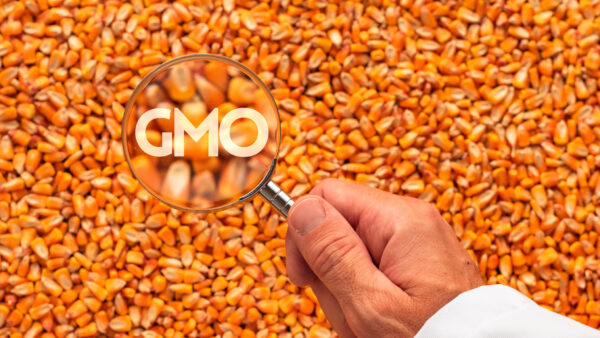
Since the first biotechnology events came off-patent in Canada in 2011, has the seed industry been doing a good job of educating growers on contract obligations?
The first of the commercial biotechnology events went off-patent and became “generic” in Canada in 2011. The expiration of patents for biotechnology events creates opportunities for growers and the seed industry, but also creates challenges that must be addressed.
One of the most important challenges presented by patent expiration of biotechnology events is educating farmers on stewardship obligations so they continue to cultivate seed varieties containing off-patent events without jeopardizing Canadian export markets.
What is the seed industry currently doing to educate farmers on patent expiration and what more can be done?
Positive Steps
Leading up to the expiration of its Roundup Ready 1 patent for soybeans, Monsanto Canada launched an information campaign to inform soybean farmers and other stakeholders about the changes coming to Roundup Ready soybean production in Canada.
“We’ve been talking about this development with farmers, seed company licensees and others for some time now,” said Mike McGuire, Monsanto’s sales and marketing lead for Eastern Canada, in a press release leading up to patent expiry in 2011.
The company took several steps to ensure growers and industry were well educated, including the production and distribution of a brochure titled A Guide to Roundup Ready Soybean Patent Expiry and the launch of a new website — www.soybeans.com — both of which contained information related to Roundup Ready soybean production in the post-patent environment.
President of the Canadian Seed Trade Association, Stephen Denys maintains Monsanto and the rest of the industry has been doing a good job informing growers.·
“To the best of my knowledge, trait licensees and certified seed dealers have been overall communicating effectively with customers in terms of their contract obligations,” says Denys, who is also vice-president of sales and marketing for Pride Seeds.·
“Like any other area of life, there are likely a vast majority who appreciated the advice and direction and act accordingly and some who will pursue their own agendas. In the case of Roundup Ready 1, there was a comprehensive communication strategy over multiple years to ensure producers were aware of the applicable timelines and to ensure they were aware of their responsibilities within these timelines. Anyone who says they were not informed either did not grow soybeans prior to four years ago or chose to ignore the information forwarded by Monsanto, licensing seed companies, the media, etc.,” he adds.
|
“When it comes to other genetic contracts or supporting tools aimed at protecting plant breeders’ rights, I believe we need, as an industry, to be less emotional about explaining contract terms with growers.” |
Contract Communication Key to Increased Investment
While Canadian growers have been well educated on patent expiration for several years, the important issue has now become continued education to ensure contracts and technology use agreements are being used properly in a post-patent environment. The onus is really on growers to take the time to understand their obligations when signing any contracts, including technology agreements. However, Denys says by properly communicating a contract to growers, seed companies can actually help increase the use of certified seed.
“I believe at the end of the day the industry has done an overall good job in terms of communicating about the patent expiry of Roundup Ready 1,” says Denys. “When it comes to other genetic contracts or supporting tools aimed at protecting plant breeders’ rights, I believe we need, as an industry, to be less emotional about explaining contract terms with growers.”
Denys says there is still a mindset or culture surrounding farm-saved seed that has been extremely counterproductive to investment in productivity gains in a range of crops across the country. “This has put Canada behind many other countries around the world, even though in many coffee shops the perception is the opposite — that we are in front when the reality is we are behind,” he explains.
Based on meetings held by the industry this year, Denys says that growers and their associations are recognizing the industry cannot move forward in terms of new genetics and tools to enhance yield in a variety of crops without investment both from within the country and from outside its borders. “Investment really starts with planting certified seed and recognizing that if we do not invest on the farm in seed innovation in our planting choices, there is little chance that Canada will be the destination for the global investment required to move our yields higher — and at a pace consistent with competing countries around the world.”
And proper communication of contracts, technology use agreements and other intellectual property tools is one way seed companies can ensure growers recognize this.
Ensuring Compliance
When the Roundup Ready patent expired in Canada in 2011, DuPont Pioneer launched an intellectual property protection program for soybeans to ensure its contracts were being followed. Under the program, those purchasing the company’s soybean seed could be randomly selected for an on-farm product compliance check to ensure no bin-run seeds were planted, a violation of patent rules. DuPont Pioneer hired Agro Protection of Saskatoon to provide the investigators.
DuPont Pioneer is launching a similar program this year in the United States as the Roundup Ready soybean patent is set to expire in that country in 2014. At a recent media event discussing the roll-out of the program in the United States, Randy Schlatter, senior manager for the Intellectual Property Program Office at DuPont Pioneer, spoke about the Canadian model. He says before the program was initiated, one of the top conversations in Canadian agriculture was what would happen when the patent expired. “Everyone thought it would be the Wild West, where everyone brown-bagged,” he says.
However, that hasn’t been the case. Once varietal patent protection occurred, DuPont Pioneer established an education and enforcement program, and “it has been accepted,” says Schlatter. “We were granted varietal improvement patents in Canada that gave us the same protection as in the United States. [Canadian growers] understood if they wanted to be a world player — in soybeans — they had to do something.”
Monsanto has carried out a similar program since 1997. Called the Technology Protection Field Check Program, a third party conducts field sampling to ensure growers are using Monsanto technology correctly.
Tailoring Existing Stewardship Programs
There are also some existing stewardship programs and committees that are starting to look at patent expiration and will make an effort to address the challenges.
The Excellence Through Stewardship program, an initiative to promote the global adoption of stewardship programs and quality management systems for the full life cycle of biotechnology-derived plant products, does not directly deal with patent expiration right now. “We do, however, as part of the life cycle approach to stewardship, which includes crop production, direct organizations to implement product management practices to enable appropriate use of their products,” says Chris Holdgreve, executive director of ETS. “This would include product and technology use guidance and conditions of use for producers that could, depending on applicability, include a wide range of things from resistance management issues to something like patent expiration.”
The program includes a third-party independent auditing component through which members are audited across the stages of the product life cycle that are applicable to their operations. “This would include everything from stewardship and quality management practices in the labs through to a decision to discontinue a product that has reached the end of its life cycle and is being replaced or no longer sold,” explains Holdgreve.
“The ETS program is focused on best practices through the life cycle — which represent time-tested, successful approaches to the responsible management of products. I would expect as the issue of product expiration continues to advance — through the efforts of BIO [Biotechnology Industry Organization], ASTA [American Seed Trade Organization] and the companies involved — there will be additional guidance developed through ETS on this issue,” he adds. ETS currently has a Guide for Product Discontinuation of Biotechnology-Derived Plant Products, which Holdgreve says will be the likely spot for additional guidance on product expiration.
Industry Standard
Currently there is not an industry standard outlining the information used on seed bags and in contracts, and Denys says it would be difficult to implement something like that.
“That is a tough one,” he says. “To have an industry standard means that companies are using the same intellectual property protection tools or approaches and this is not necessarily the case. It also infers an agreement on the same tools, which for competitive and perceptual reasons may be difficult or impossible to co-ordinate. In a free market environment, companies want to position their products and IPP tools according to their own interests and in the best interest long term of their customers.”
However, Denys does think there is a certain amount of co-operation the industry can adopt. “I believe the seed industry working with stakeholders, including producers, should create an environment conducive to investment and then each company can support their investment accordingly in the way they choose. There would be a benefit to using the same or similar language, but this may be difficult to achieve,” he says.
Julie McNabb














